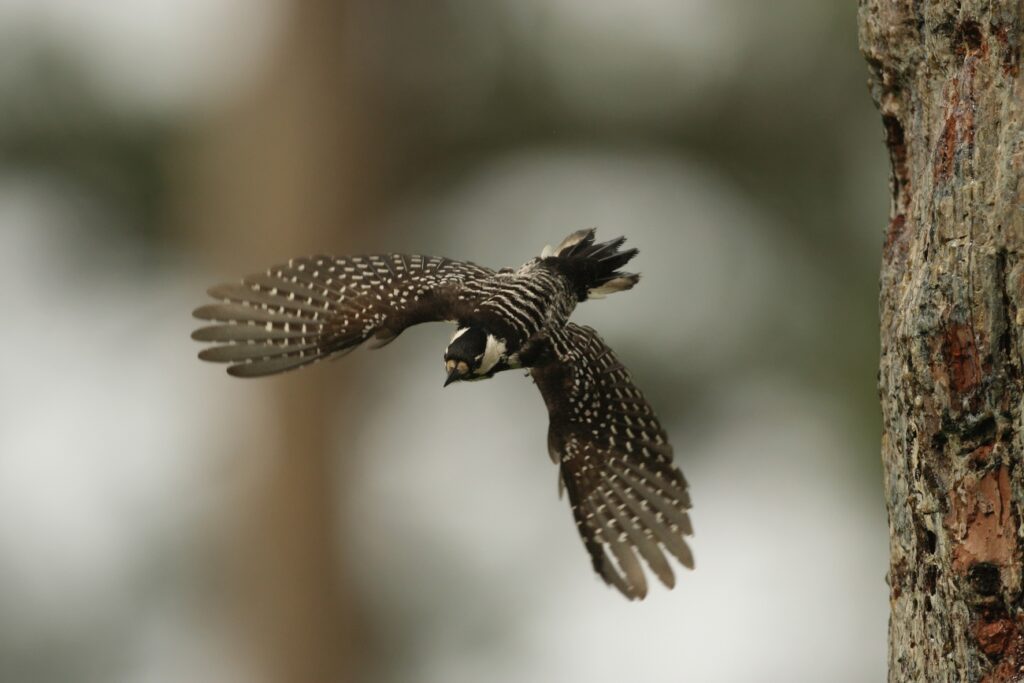Tennessee’s wildlife and environmental agencies plan to bring back a species no longer found in the state: the red-cockaded woodpecker.
The little bird looks similar to downy and hairy woodpeckers but has a unique behavior: It excavates its nest holes in live trees, not dead ones. The red-cockaded woodpecker is considered threatened in the U.S. and has not been spotted in Tennessee since 1994.
“These types of things don’t come around too often in somebody’s career,” Josh Campbell, chief of biodiversity at the Tennessee Wildlife Resources Agency, or TWRA, said during a press conference announcing the recovery plan for the bird on Wednesday.
He suggested the red-cockaded woodpecker was widespread about 300 years ago when Tennessee looked different.
“We had open woodlands, we had open forests. We had savannas, prairies,” Campbell said. “Most importantly, fire was a big component of those ecosystems.”
Grasslands and old-growth pine forests that once housed the bird have mostly been wiped out by farms, logging and development. Less than 5% of the nation’s 90 million acres of longleaf pine forests remain, according to the U.S. Forest Service.
 Courtesy Martjan Lammertink/U.S. Fish and Wildlife Service
Courtesy Martjan Lammertink/U.S. Fish and Wildlife Service The red-cockaded woodpecker was last spotted within Tennessee in Cherokee National Forest in 1994.
But state scientists recently identified one area as a potential habitat for the bird: the Savage Gulf Natural Area, a nearly 16,000-acre area between Murfreesboro and Chattanooga on the Cumberland Plateau. This area contains an old-growth shortleaf pine forest.
TWRA will work with the Tennessee Department of Environment and Conservation and the U.S. Fish and Wildlife Service on habitat restoration. They plan to release the red-cockaded woodpecker into the area in 2028.
Campbell said federal funding was uncertain, so the agencies are now promoting a fundraising campaign.
Details about how they will restore the woodpecker’s habitat have not yet been released.
The agencies will use “methods of thinning and burning,” TWRA spokesperson Jason Harmon told WPLN News.
“To maintain this area, burning will be essential,” Harmon said.
Copyright 2025 WPLN News



